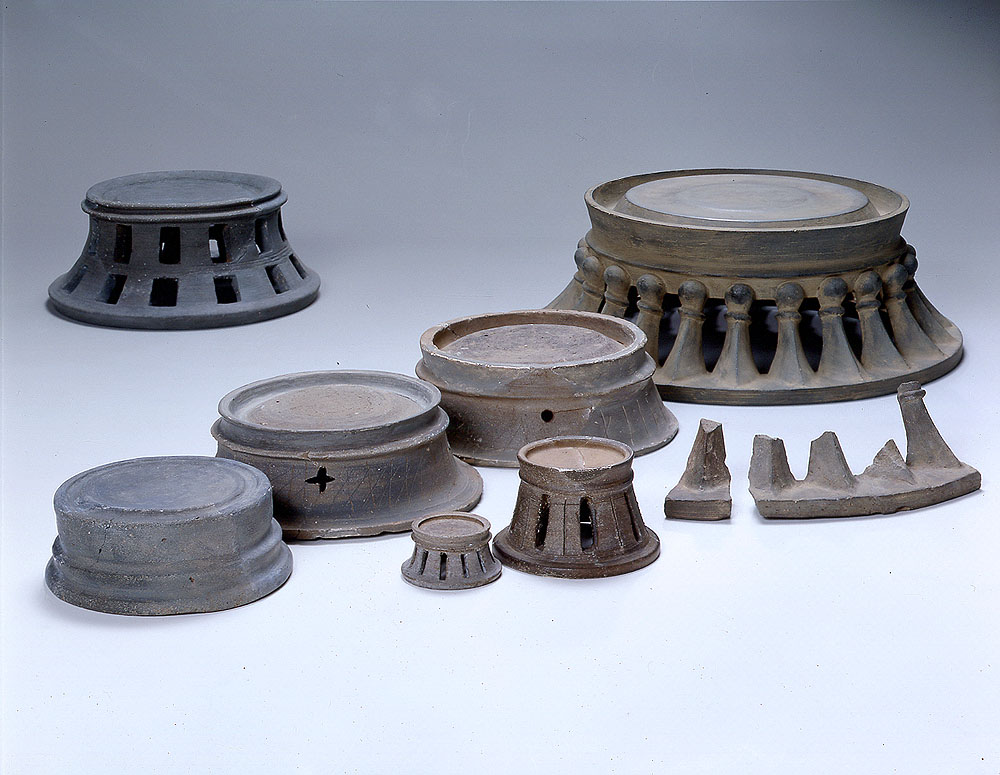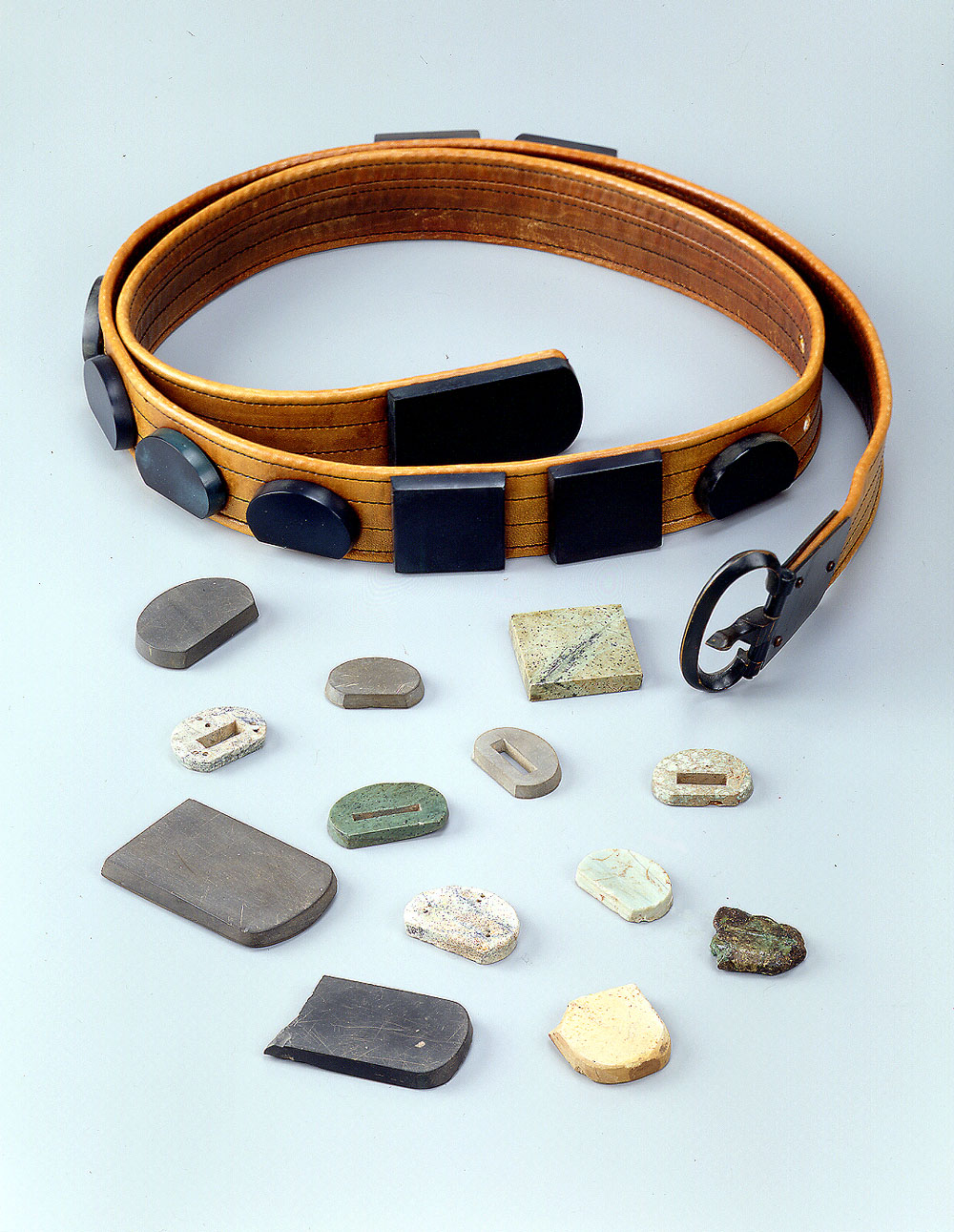The Saiku’s government officials
The Saiku’s government officials
The Saikuryo, the government office responsible for the running of the Saiku, was established during the first half of the 8th century. The large numbers of inkstones and inscribed earthenware vessels dating from this time that have been retrieved from the Saiku site suggest the significant growth in the number of government officials working at the Saiku.On display are inkstones, earthenware vessels with inscriptions, and stone belt ornaments worn by government officials.
By the end of the 8th century, the Saiku grew into a “city” consisting of blocks delineated by a network of straight roads laid out on a grid plan. Findings from excavations suggest that the Saikuryo’s operations had become stable by this time.
Enmenken (Inkstone with flat, round grinding surface)
 During the 7th and 8th centuries, government administration based on written documents spread to, and became established, in all corners of the country, leading to a great increase in writing. Consequently, inkstones are quite frequently found at archaeological sites dating from this period. The inkstone on display here has a shape typical of this period. Unlike inkstones of today, which are commonly made of stone, these were ceramic, with a groove around the circular grinding surface for pooling the ink.
During the 7th and 8th centuries, government administration based on written documents spread to, and became established, in all corners of the country, leading to a great increase in writing. Consequently, inkstones are quite frequently found at archaeological sites dating from this period. The inkstone on display here has a shape typical of this period. Unlike inkstones of today, which are commonly made of stone, these were ceramic, with a groove around the circular grinding surface for pooling the ink.
Sekitai (Stone belt fittings)
 Ancient government officials wore robes according to their official positions, and leather belts over their robes. Sekitai refers to a type of leather embellished with stone ornaments. Excavations at the Saiku site have yielded small, thin rectangular or circular stone plates, which are among the artifacts indicating the activities of the Saiku’s government officials.
Ancient government officials wore robes according to their official positions, and leather belts over their robes. Sekitai refers to a type of leather embellished with stone ornaments. Excavations at the Saiku site have yielded small, thin rectangular or circular stone plates, which are among the artifacts indicating the activities of the Saiku’s government officials.
